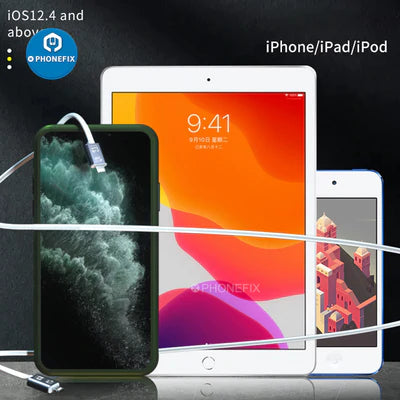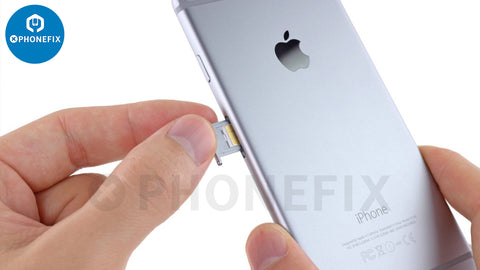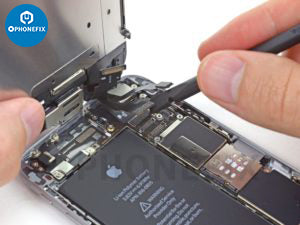7 Top Common Phones Repaire Mistakes and Their Solutions
Today we will be talking about the top mistakes when repairing your own phone. Here is a Phonefix
combined list of the most common things most people do wrong and their
solutions. The 10 things likely to go wrong when you fixing a phone or
laptop.
1. Not asking the customer about the problem and history of the handset
When
the customer submits the phone for repairs, many technicians do not ask
the customer about the reason or cause for the fault in their phone.
Instead if the customer is asked about the problem you can straight
away know the exact problem and start working on it thus saving your
precious time.
Also make it a point to ask the customer about the
history of the handset and whether he had already given it to someone
else for repairs before for this same fault or some other fault. This
way you will know if the handset was already opened before or not.
2. Not Taking the Backup of the Data
While
it is your slip-up not to take thorough backup of all the information
from the phone prior to giving it over to the specialist, it is
additionally the obligation of any expert who conducts phone repairs.
This
will guarantee that if there should be an occurrence of any incident,
regardless of how far-fetched it very well may be, you will have backup
and accordingly you don't risk losing them. Mechanic lightning transmission data cable can be used for iPhone iPad iPod achieving full data migration.
Mechanic lightning transmission data cable can be used for iPhone iPad iPod achieving full data migration.
3. Lose Track of Screw Sizes (or Just Lose Them)
There are two big mistakes you can make when you start removing screws:
Assuming that the screws will stay in place on a nearby flat surface
Assuming that there are only a couple lengths or widths of screws in
the device, and that you’ll be able to remember them all.
When a
mobile phone is dismantled, some technicians are very careless and they
just go about placing the screws on the workbench. Now while fixing the
phone, they misplace the screws and when they reassemble the handset
they fall short of these screws.
Some technicians just leave
these slots empty, while some of them use other unmatching screws which
is bound to damage the original threads in the slots.
The best way to overcome this common mistake is to keep all the screws and other small parts in a Magnetic Screw Plate, on which you can label, stick, and separate all your little parts. This
way you will be ensured that you have replaced all the parts and screws
back in place. Using different trays for different models of opened
handsets will also help you to dismantle many handsets simultaneously.
This
way you will be ensured that you have replaced all the parts and screws
back in place. Using different trays for different models of opened
handsets will also help you to dismantle many handsets simultaneously.
4. Not Removing the SIM Tray Before Trying to Remove Boards
This
one comes from iPhones, but applies to other phones, too: the slide-out
tray where the phone stores a SIM card goes deep into the phone, and
it’s usually made of metal. 
At
least two different teardown engineers told me that despite writing it
into guides themselves, they often forget about it, until they’re
wondering what’s keeping the motherboard from coming out smoothly.
5. Damage Tiny Components with Clumsy Prying
All
it takes is a little force to slip off a clip or battery compartment
and onto a tiny little module, and now your DIY repair is not something
you can do yourself.
Go slowly, always back off and look at
something if you’re applying pressure and it’s not working, and check if
there isn’t a clip, cable, screw, or something else preventing you from
getting your object lose.
6. Bad Quality tools:
For
starters, you will need tools to open your phone. Screwdrivers and
tweezers are the most commonly used tools to open a phone. Now you will
find a lot of screwdriver types to open your phone.
When
it comes to dismantling iPhones, the pentalobe screwdriver is most
frequently used. You need tweezers to hold or lift electronic
components. They are also used to hold any other spare part whenever
needed.
Apart from opening tools, there are many other tools as
well that you will need to repair your phone like IPA, brushes,
multimeter, magnifying lamp, liquid flux, etc.
Many users choose
to use bad quality of these tools to cut the cost of the repair. This
lead to them facing troubles with their repaired phone in the future.
Phonefix has multiple tools which you will need to repair your phone.
7. Disconnect Battery:
One
the main thing that you should do when you are starting to repair your
own phone is to disconnect the battery. If you leave the battery
connected, it might result in damaging the delicate components of your
phone or cause a short circuit.
There are many scenarios when
you face the issue of a flickering screen after a phone repair. You need
to make sure that the battery is properly disconnected before starting
the repair as it can even cause damage to the screen of your phone.  So
we hope that it will give you an idea of the importance of battery
removal before the start of a repair, and this is one of the top mistake
you can make while repairing your own phone.
So
we hope that it will give you an idea of the importance of battery
removal before the start of a repair, and this is one of the top mistake
you can make while repairing your own phone.
a. removable battery
Some
mobile phones have the option of removable battery. If you have one of
those phones, then you have your job cut out for you. You just have to
remove the back cover and pull the battery out of the phone.
b. non-removable battery
Since
most of the manufacturers are trying to make their phones water and
dust resistant, they are opting for the option of non-removable
batteries in their latest models.
Apple has been known to include
non-removable batteries in their iPhones since quite some time now. So
if you own an iPhone and want to remove its battery, you have to follow
online tutorials. It requires the use of special tools and equipment.
Avoid These Phone Repair Mistakes
Now
that you know the biggest phone repair mistakes to avoid, you can have
peace of mind when repairing your device or getting it repaired. These
tips are easy to avoid and should make you feel confident in making sure
your phone is as good as new.
Do you love technology? So do we. Check out our website Phonefix for the latest in phones parts, repair tools and other technology-related reviews.

.jpg)
Comments
Post a Comment